第85章
IF we look at a map of the Archipelago, nothing seems more unlikely than that the closely connected chain of islands from Java to Timor should differ materially in their natural productions. There are, it is true, certain differences of climate and of physical geography, but these do not correspond with the division the naturalist is obliged to make. Between the two ends of the chain there is a great contrast of climate, the west being exceedingly moist and leaving only a short and irregular dry season, the east being as dry and parched up, and having but a short wet season. This change, however, occurs about the middle of Java, the eastern portion of that island having as strongly marked seasons as Lombock and Timor. There is also a difference in physical geography; but this occurs at the eastern termination of the chain where the volcanoes which are the marked feature of Java, Bali, Lombock, Sumbawa, and Flores, turn northwards through Gunong Api to Banda, leaving Timor with only one volcanic peak near its centre, while the main portion of the island consists of old sedimentary rocks. Neither of these physical differences corresponds with the remarkable change in natural productions which occurs at the Straits of Lombock, separating the island of that name from Bali, and which is at once so large in amount and of so fundamental a character, as to form an important feature in the zoological geography of our globe.
The Dutch naturalist Zollinger, who resided a long time on the island of Bali, informs us that its productions completely assimilate with those of Java, and that he is not aware of a single animal found in it which does not inhabit the larger island. During the few days which Istayed on the north coast of Bali on my way to Lombock, I saw several birds highly characteristic of Javan ornithology. Among these were the yellow-headed weaver (Ploceus hypoxantha), the black grasshopper thrush (Copsychus amoenus), the rosy barbet (Megalaema rosea), the Malay oriole (Oriolus horsfieldi), the Java ground starling (Sturnopastor jalla), and the Javanese three-toed woodpecker (Chrysonotus tiga). On crossing over to Lombock, separated from Bali by a strait less than twenty miles wide, I naturally expected to meet with some of these birds again; but during a stay there of three months I never saw one of them, but found a totally different set of species, most of which were utterly unknown not only in Java, but also in Borneo, Sumatra, and Malacca. For example, among the commonest birds in Lombock were white cockatoos and three species of Meliphagidae or honeysuckers, belonging to family groups which are entirely absent from the western or Indo-Malayan region of the Archipelago. On passing to Flores and Timor the distinctness from the Javanese productions increases, and we find that these islands form a natural group, whose birds are related to those of Java and Australia, but are quite distinct from either. Besides my own collections in Lombock and Timor, my assistant Mr. Allen made a good collection in Flores; and these, with a few species obtained by the Dutch naturalists, enable us to form a very good idea of the natural history of this group of islands, and to derive therefrom some very interesting results.
The number of birds known from these islands up to this date is: 63from Lombock, 86 from Flores, and 118 from Timor; and from the whole group, 188 species. With the exception of two or three species which appear to have been derived from the Moluccas, all these birds can be traced, either directly or by close allies, to Java on the one side or to Australia on the other; although no less than 82 of them are found nowhere out of this small group of islands. There is not, however, a single genus peculiar to the group, or even one which is largely represented in it by peculiar species; and this is a fact which indicates that the fauna is strictly derivative, and that its origin does not go back beyond one of the most recent geological epochs. Of course there are a large number of species (such as most of the waders, many of the raptorial birds, some of the kingfishers, swallows, and a few others), which range so widely over a large part of the Archipelago that it is impossible to trace them as having come from any one part rather than from another. There are fifty-seven such species in my list, and besides these there are thirty-five more which, though peculiar to the Timor group, are yet allied to wide-ranging forms. Deducting these ninety-two species, we have nearly a hundred birds left whose relations with those of other countries we will now consider.
If we first take those species which, as far as we yet know, are absolutely confined to each island, we find, in:
Lombock 4 belonging to 2 genera, of which 1 is Australian, 1 Indian.
Flores 12 " 7 " 5 are " 2 "Timor 42 " 20 " 16 are " 4 "The actual number of peculiar species in each island I do not suppose to be at all accurately determined, since the rapidly increasing numbers evidently depend upon the more extensive collections made in Timor than in Flores, and in Flores than in Lombock; but what we can depend more upon, and what is of more special interest, is the greatly increased proportion of Australian forms and decreased proportion of Indian forms, as we go from west to east. We shall show this in a yet more striking manner by counting the number of species identical with those of Java and Australia respectively in each island, thus:
In Lombock. In Flores. In Timor.